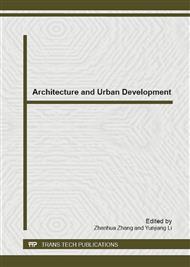p.484
p.488
p.492
p.497
p.504
p.511
p.516
p.520
p.524
Thermal Stress Analysis on Steel Bridge Deck with Epoxy Asphalt Concrete under Low Temperature Based on Viscous-Elastic Method
Abstract:
Epoxy asphalt concrete has been widely used in China as an excellent paving material on long-span steel bridges. Analysis of its low-temperature thermal stress can be a more accurate grasp of pavement low temperature stress condition. The bending creep test of epoxy asphalt mixture was carried out at low temperatures to obtain the creep compliances and determine the relaxation module. Then the principal curves of the relaxation module were regressed in a form of Prony progression expression by Matlab. The relaxation module was further converted to the parameters needed in the viscous-elastic module in ANSYS software. Finally, a three-dimensional full-scale Finite Element model for steel box girder and asphalt overlay was constructed to analyze the stress scenario under low temperatures for the duration of 48 hours. The maximum temperature stress was only 2.45 MPa at a temperature of -20.4°C and thus no shrinkage cracks will occur.
Info:
Periodical:
Pages:
504-510
Citation:
Online since:
November 2012
Authors:
Price:
Сopyright:
© 2012 Trans Tech Publications Ltd. All Rights Reserved
Share:
Citation:


